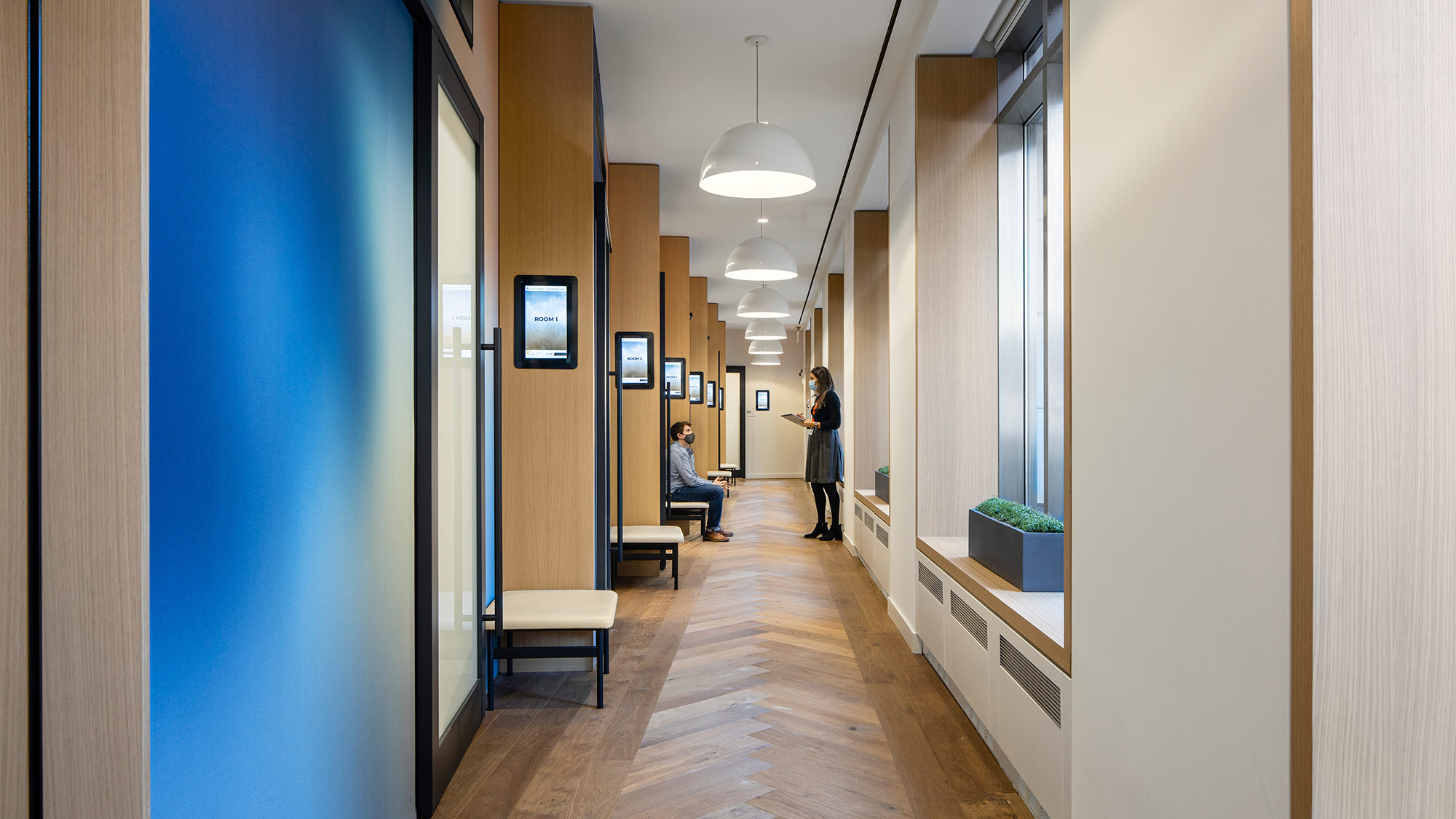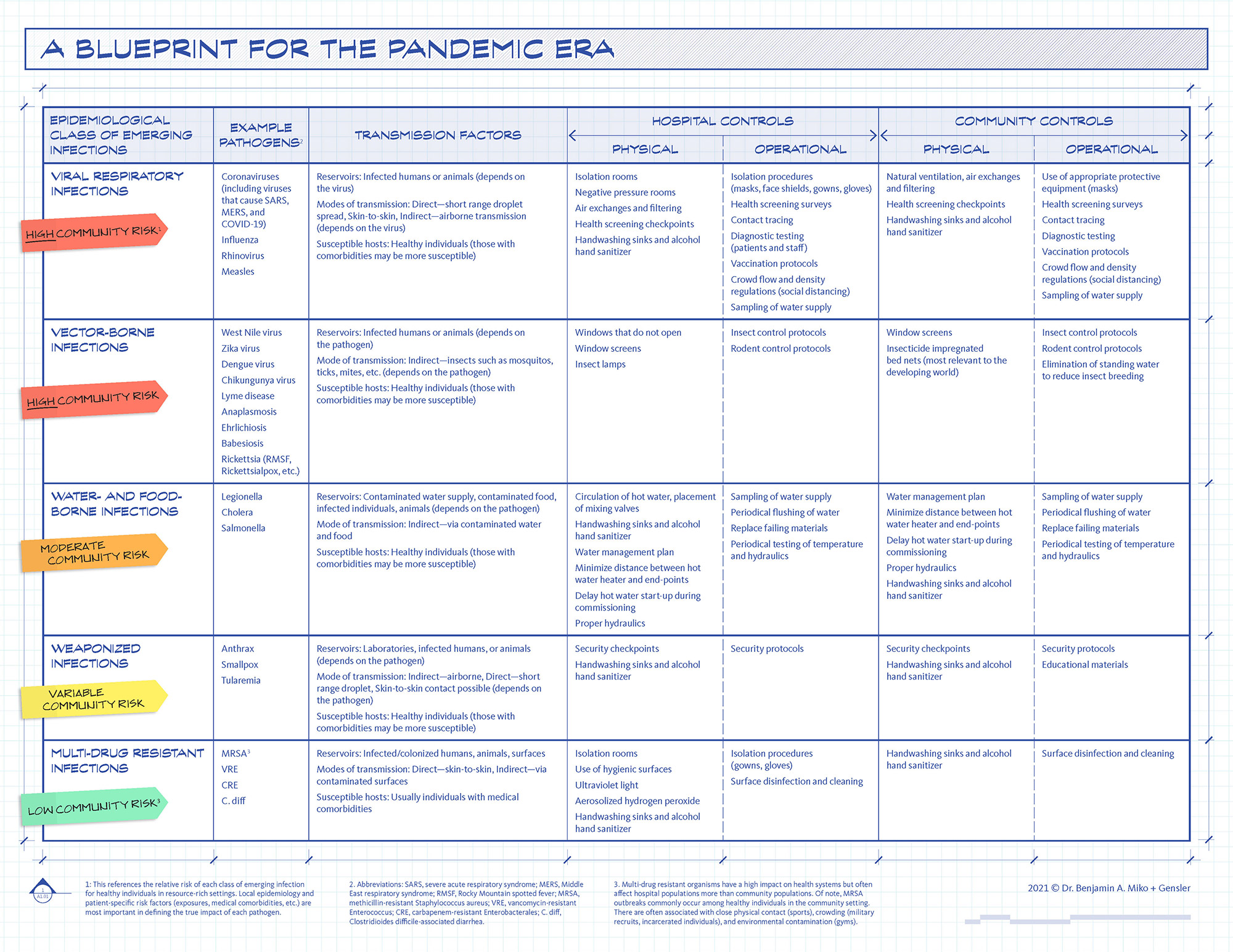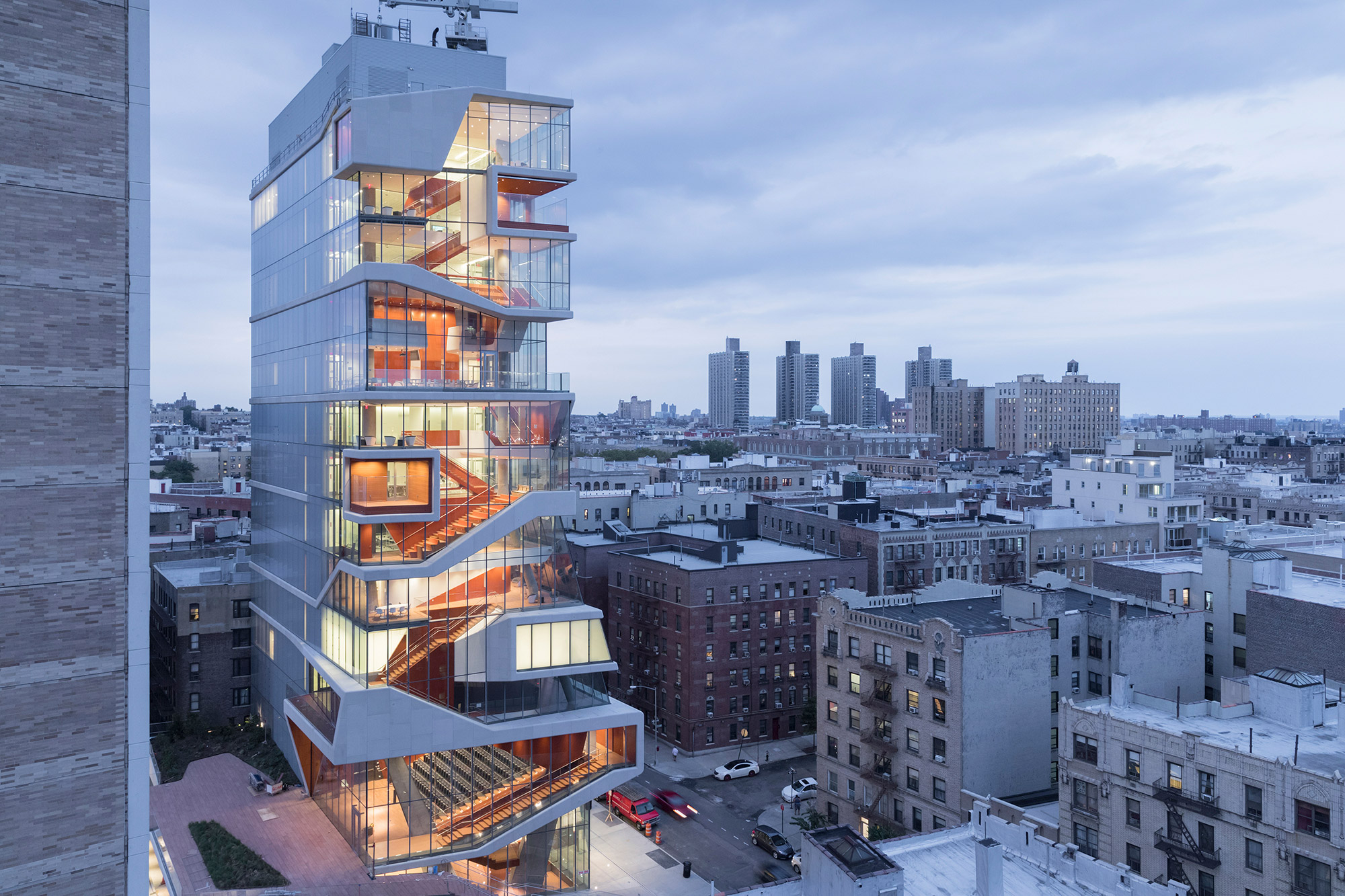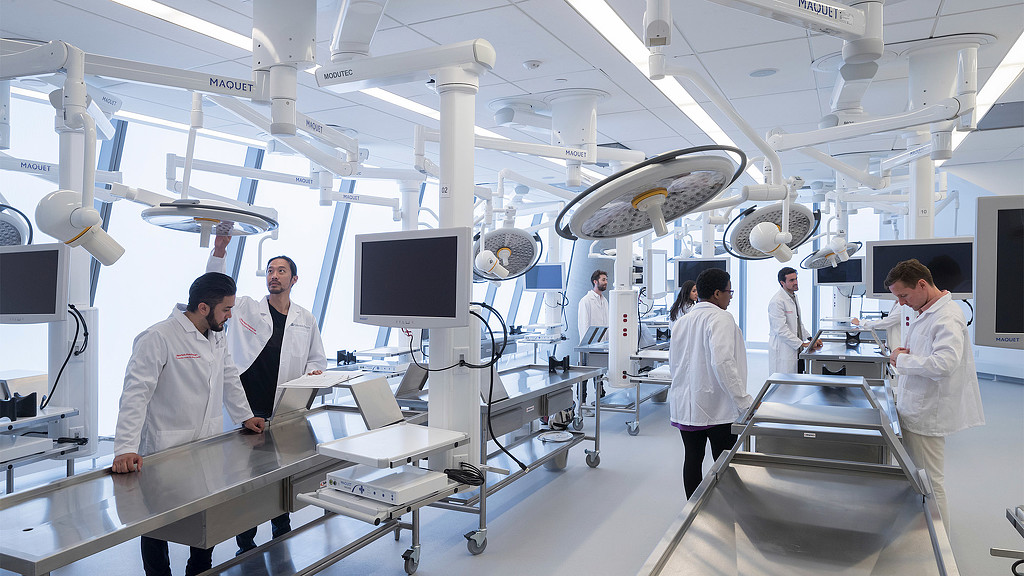A Pandemic-Conscious Blueprint for Architecture
August 17, 2021 | By Madeline Burke-Vigeland, Dr. Benjamin A. Miko
Since the beginning of the pandemic, architects, designers, and engineers have provided input on the efforts made to address this ongoing health crisis. Together with biomedical advances such as rapid testing platforms, novel therapeutics, and vaccination programs, design interventions will help rebuild trust between individuals and physical space as people begin to re-engage with their communities. However, despite the hope for post-pandemic normalcy, it is clear that we live in an era characterized by emerging infectious diseases. Over the past twenty years, we have been faced with near-constant pandemic threats: West Nile virus, novel H1N1 influenza virus, SARS, MERS, Ebola virus disease, and Zika virus disease. Add the ongoing threats of antibiotic resistance and bioterrorism, and it becomes clear that communicable diseases will continue to pose a substantial risk going forward. What does this mean for the places we inhabit?
It is important to recognize that emerging infectious diseases will require unique design interventions and behavioral changes that will allow people to gather in public and private spaces. As we look back on the past year and recognize the importance of preparation and resources, we need to think beyond COVID-19 and establish an infrastructure that transforms our built environment so that we can protect our communities.

Modes of Transmission[1]
There are countless pathogens (viruses, bacteria, fungi, and parasites) capable of causing illness; it is useful to focus on the core principles of disease transmission rather than on the specifics of individual organisms. In epidemiological terms, transmission of infection occurs when a pathogenleaves a reservoir and is then conveyed by a mode of transmission to a susceptible host via a portal of entry. Disease prevention and control measures target one or more of these steps with the intention of interrupting the chain of transmission. Reservoirs of disease can be humans (infected individuals), animals, or the environment itself (contaminated air, surfaces, water, soil, etc.). Because infected individuals act as the main reservoir of COVID-19 and influenza, interventions such as masking, social distancing, cough covering, and contact tracing are particularly effective. These measures would be less effective when applied to animal or environmental reservoirs.
Modes of transmission can be either direct or indirect. Direct transmission refers to skin-to-skin contact, sexual contact, or short-range “droplet” spread. Infectious droplets, relatively large in size, can travel a few feet before falling to the ground. These are responsible for the majority of COVID-19 transmission events and are therefore targets of the measures outlined above.
Indirect transmission refers to spread by airborne particles, inanimate objects (“vehicles”), or insects (“vectors”). Airborne transmission, in which an infectious agent is carried by dust or small droplet nuclei, may be difficult to control as the pathogen is suspended in the air for long periods of time: susceptible hosts may then be exposed to an organism long after an infected individual has exited a space. Measles and tuberculosis are the prototypical airborne pathogens, although COVID-19 may be transmitted in this manner as well. Ventilation and air filtration systems can help prevent this mode of transmission.
Vehicle-based transmission occurs when contaminated food, water, biological products, or surfaces (“fomites”) transmit a particular organism. Food and water-based transmission events are relatively uncommon in the developed world due to modern sanitation protocols. Transmission of disease from contaminated surfaces is important in certain hospital settings, but its role in the community is less clear. Vector-borne transmission is particularly important given the alterations in insect ecology caused by climate change and deforestation. Many recent pandemics have occurred when mosquito or tick-borne pathogens infect previously unexposed populations. These transmission events often occur when individuals are exposed to nature and are therefore important considerations as COVID-19 shifts activities of daily living to outdoor spaces. Elimination of mosquito breeding grounds and use of screens/bed nets are effective design-related interventions to control vector-borne diseases.
Based on these modes of transmission, the accompanying “blueprint” lays out the classes of emerging infections and provides a snapshot for suggested design controls in the built environment. This approach takes its lessons learned from hospital best-practices and suggests a corresponding application in a variety of community settings.

Systems-Based Approach to the Built Environment
With this blueprint as a foundation, the creation of a uniform standard of practice for pandemic-conscious design would have far-reaching and compelling outcomes. The following are factors the architecture industry can consider:
Development of pandemic safety plans: Protocols for reduced occupancy, adjusted crowd flow, health screening programs, and intensified personal and environmental hygiene. By implementing these strategies like we do with fire safety, building occupants and visitors may have increased confidence in their surroundings.
Creation of graphic health standards: Universal symbols/signage for handwashing, social distancing, and health screening checkpoints that are not regionally specific or subject to interpretation.
Expansion of building codes: Added regulations for hand hygiene resources based on projected occupancy and adjustable occupancy limits to permit social distancing protocols in the event of an outbreak.
Expert consultations: Epidemiology reviews to ensure public health impacts are taken into consideration when designing or reconfiguring spaces.
Certification programs for pandemic-prepared buildings: Similar to green and healthy building programs like LEED, Fitwel, and WELL, or within those systems, establish a “Leadership in Design for Infection Prevention and Control” rating systems for the design, construction, operation, and maintenance of buildings utilizing best practices to reduce infectious diseases. Include incentives, such as tax deductions, for achievement.
Integration of infectious diseases and epidemiology into training programs: Practical education on pandemic preparedness for architects, designers, and engineers at all career stages to better create and implement design solutions that support new behaviors.
Continuous re-evaluation of evidence-based guidelines: Professional practice recommendations based on coordinated scientific research. Spaces that are powered by spatial data such as building sensors, badging, and concierge apps can be monitored for environmental conditions and adjusted in real-time will allow for faster adaptation of the recommended controls.

Understanding discrete patterns of disease transmission will greatly impact the way that we think about and design physical space, as well as transform our role as architects. Our ability to anticipate threats posed by future pandemics will allow us to develop and implement innovative strategies that will create disease-resilient environments and more universally healthy experiences. Adopting these standards and creating a continuously evolving framework that is backed by scientific research is paramount – our future depends on it.
[1] Compiled by Benjamin A. Miko from “Principles of Epidemiology in Public Health Practice, Third Edition (2012, pp 1.62-68), US Centers for Disease Control and Prevention, Atlanta, GA, USA.”
For media inquiries, email .

